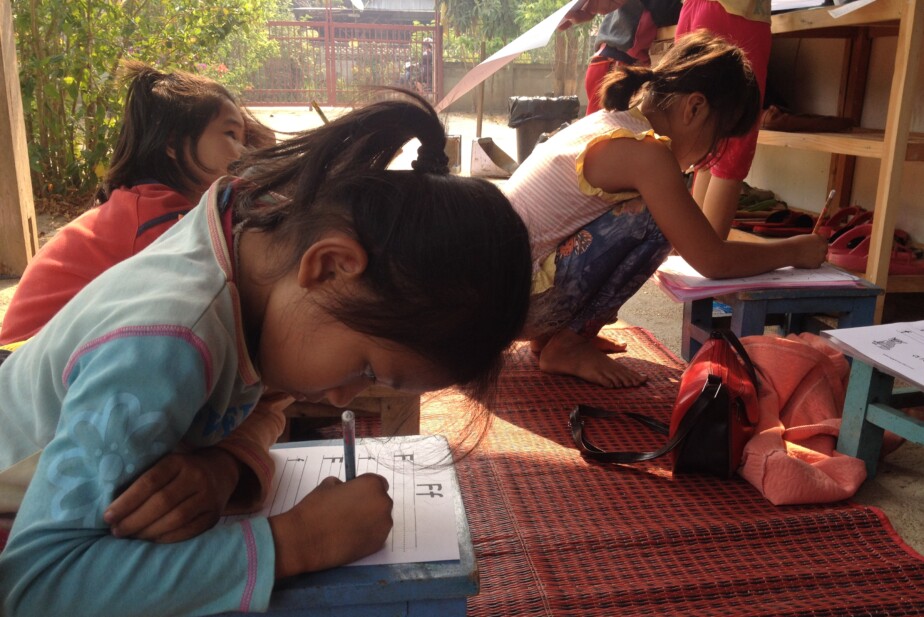
As I mentioned in one of my more recent posts, the Burmese Refugee Project would be starting a summer camp for the Shan refugees engaged in our after school English tutoring program. This past Monday marked DAY ONE. In total, thirty kids are in attendance. The students are split into three classes based on level of English proficiency which tends to also correspond with age. I take the youngest group which consists of fifteen kids, half of the students.
The camp runs from 9am to 3pm, but I’m usually at the school by 8 to prepare for my lesson and the fun activity for the day. We begin with an hour and a half lesson of English, which I have discovered is WAY too long for my kids. 10:30 marks the beginning of activity time, which the kids love! The activities range from craft projects, such as making a beaded bracelet or making a paper plate sun, to physical activities such as soccer, badminton, Tae Kwon Do, and fun team competitions. Afterwards, the kids are fed lunch and then proceed to their Shan lesson,where they are taught how to read and write in their household language by a fellow 19 year-old Shan refugee, Mo-Eh. The day culminates with a 15 minute review of our English lesson that day.
There is only enough room in the school for two classes, so my English class is conducted outside. Week one was an experiment, and I have determined that outside is not a suitable environment for my class. On top of the kids’ already short attention spans, they are surrounded by a sand pit and a swing set. About every ten minutes, I receive the same question, “Danny, minute play?” which means “How many minutes until we can play?” when translated from broken, little kid, Thai English into actual English. And then there’re always the two or three kids who sneak to the swing set when I turn my back, and then I have to coax them into coming back. Despite these slight annoyances, I did discover fruitful ways for keeping the attention and interest of my class while simultaneously aiding them in learning. This week, they learned emotions, so “If you’re happy and you know it…” was a great song that we sang at least five times that they loved. Also, I have found that pairing vocabulary with motions or facial expressions is more effective than flashcards in helping them grasp words because it’s easier to remember a physical motion you performed than an image on a card, especially when there are many words. Regardless, next week, I’m swapping classrooms with Khalil inside in hopes that my class is more focused. My goal by the end of the summer school is to get the students to be able to write the entire alphabet and identify every letter.
On Mondays and Thursdays, I also teach Tae Kwon Do during activity time. I had no idea how I was going to do this because I know literally zero Tae Kwon Do terminology in Thai, but I found that demonstrations and a lot of repetition were enough to get the kids to understand what they are doing. I started off with about twelve students interested in learning, but now there are only two teenage girls who really want to learn, which I’m fine with because I’d rather teach a select few who are interested. They were even practicing what I taught them during some free time after the lesson, which rally made me happy!
By the end of the day I’m exhausted, but of course, the kids make the whole experience worthwhile.
- My students making the letter H. One of the many ways we practice letters 🙂

